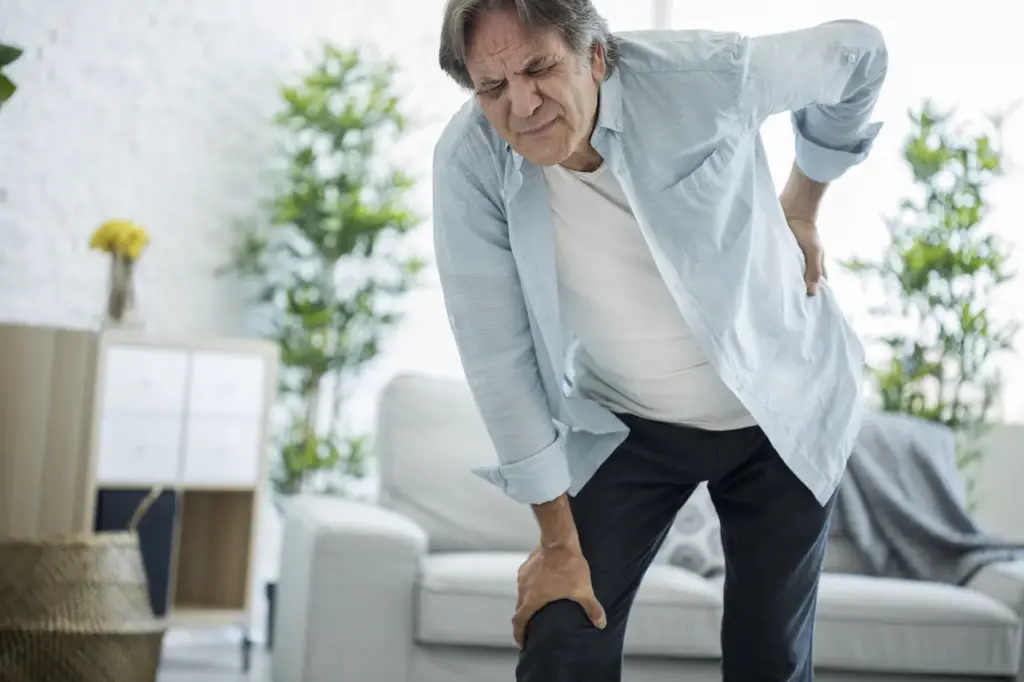Australian Back Pain Statistics
Australian Back Pain Statistics: 15 Reasons
Back pain comes in all shapes and forms, and is, unfortunately, a common problem for Australians. The lack of knowledge about back pain can be seen in everything from slouching to pulling a musculoskeletal muscle.
Australia has a staggering 4 million people with back pain. This is not a good statistic for the ‘Great Southern Land’! Australia has a population of 25 million people, and 80% of them will experience back pain.
Back pain has become so bad that the Australian government is spending millions to fix it, and employers are short-staffed. Below are some shocking statistics that show how bad back pain has become in Australia.

Back Pain Statistics Australia 2022
- In Australia, four million people or one in six suffer from back pain.
- 880,000 Australians or 3.24% suffer from chronic back pain.
- Around 80% of Australians experience back pain.
- Nearly 40 per cent of people say that back pain causes them to disrupt their daily lives and activities.
- Back pain costs the Australian healthcare system $4.8 Billion a year.
- The reduction in working hours reduces the GDP of Australia by $3.2 billion.
- In Australia, back pain causes 1.1 million lost productivity years every year.
- 19% of Australians believe that stress is to blame for their back pain.
- Nearly 50% of Australians sleep in a manner that can cause health problems for the back.
- By 2050, it’s expected that 5,23 million Australians will be suffering from chronic pain.
Australia’s Back Pain Causes & Culprits
1. It’s not necessary to have a diagnosis for back pain.
- Non-specific backache is the term used for 9 out of 10 back pain patients whose cause cannot be determined. However, research has shown that it is not necessary to diagnose the cause to treat back pain.
- Less than one in 100 Australians suffer from back pain caused by a medical condition (such as cancer or fractures).
2. Sitting with poor posture is one of the main causes of musculoskeletal problems.
- Average Australian office workers spend 75% of the time they are at work sitting down. This is around 5 hours per day.
- It is estimated that up to 50% of those who work on computers all day will experience musculoskeletal problems.
3. Poor sleeping postures and positions may contribute to the development of cervical or lumbar issues.
- Ecosa conducted a study on 4500 Australians and found that nearly 50% of them were sleeping in such a manner that it caused health issues.
- Unhealthy sleeping positions or the wrong choice of mattress and pillow can cause undue pressure to your spine. This can lead to pressure around the shoulder and spine region, which could cause back pain.
4. Heavy lifting is responsible for 80% of all lower back injuries that occur at work
- Lifting, pushing, pulling or bending are the most common injuries at work. They account for 24.2%.
- Work injuries are 80% lower back related and associated with manual material handling tasks, such as heavy lifting.

Types of Back Pains
5. In Australia, lower back pain is one of the most common complaints that GPs treat.
- One in seven to four Australians suffer from lower back pain at any given time. 10-40% adults experience acute LBP.
- Around 25% of Australians experience low back pain every day. 50% have experienced back pain in the last month.
6. More than 880,000 Australians suffer from chronic back pain
- Back pain accounts for 27.6% of chronic pain.
- Back pain affected 3.24 million Australians in 2018. This number is expected to increase to 5.23 million by 2050.
7. Paracetamol is most commonly used by Australians to treat acute non-specific LBP
- Acute backache is defined as pain lasting up to six weeks. Around 94% of Australians suffer from non-specific, neuropathic pain. 5% have serious radiculopathy and 1% have serious pathology.
- A 2014 Australian study found that paracetamol, which is commonly used to treat acute pain in the back, was not more effective than placebo.
8. Sciatica is estimated to affect 5-10% of Australians with low back pain.
- Sciatica, a painful condition caused by irritation or pressure on the sciatic nerve, is most common in people aged 25-45 years.
- About 90% of the time, sciatica can be caused by a herniated disk with nerve root pressure.
Back Pain Statistics in Australia
9. Back pain contributes to a lot of illness and disability.
- Back-related issues are responsible for 28% of all Australians with disabilities – over 1.2 million people!
- Back pain and back problems were the second most common cause of disease burden in Australia in 2015. They accounted for 4.1% of Australia’s total disease burden.
10. Women in Australia are more likely than men to suffer from scoliosis and osteoarthritis.
- Older women may experience compression fractures or changes in the vertebrae that can lead to chronic back pain and discomfort.
- Back pain is more common in women due to their excess breast tissue and pregnancy. Not only does pregnancy produce hormones that relax ligaments and joints, but it can also increase pain.
11. Around one-third to half of Australian adolescents over the age of 13 report back pain every month.
- Back pain is a common complaint among 17-year-olds. They report missing school, seeking medical care, taking medications, interfering with normal activities or preventing them from participating in sports and physical activities.
- Back pain can be caused by poor posture or carrying heavy bags. School bags that are heavier than 10% of a child’s body weight can cause serious back problems.
Back Pain: Its Effect on Your Life
12. The number of days lost to work due to back pain has increased for Australian adults from 10 per annum in 2000.
- Back pain accounts for 15.5% of all work absences in Australia.
- In Australia, back pain is the most common cause of workers taking more than 10 days off in a year.

13. In Australia, 181,000 hospitalisations for back problems were recorded in a single year
- The Australian Government spends $4.8 Billion a Year to manage lower back pain in fellow Aussies.
- Around 15% of Australians visit a registered chiropractic office at least once per year.
14. People with chronic back pain claim to have a lower quality of life than the general population
- In 2014-2015, 8.9% of people with back pain rated their health as poor compared to 4.4% for the general population.
- In the general population, 3.7% of people experience severe psychological distress and only 1.5% of people experience severe physical pain. For those with back issues, these figures are 6.8% and 3.7 per cent.
15. Lack of sleep can worsen chronic back pain, and back pain may cause lack of sleep.
- About 50-90% of people with chronic pain report having poor sleeping.
- Back pain is often associated with sleep problems because the pain can keep you awake. But a lack of restorative sleep may also make your back pain worse!
The conclusion of the article is:
Back pain statistics in Australia are staggering; no one seems to be immune. Children and teenagers are more fortunate than adults, but it is clear that back problems in Australia stem from bad posture, heavy lifting and poor sleep habits. Although there is no end to back pain, the fact that it’s so common and familiar makes us sleep easier.




